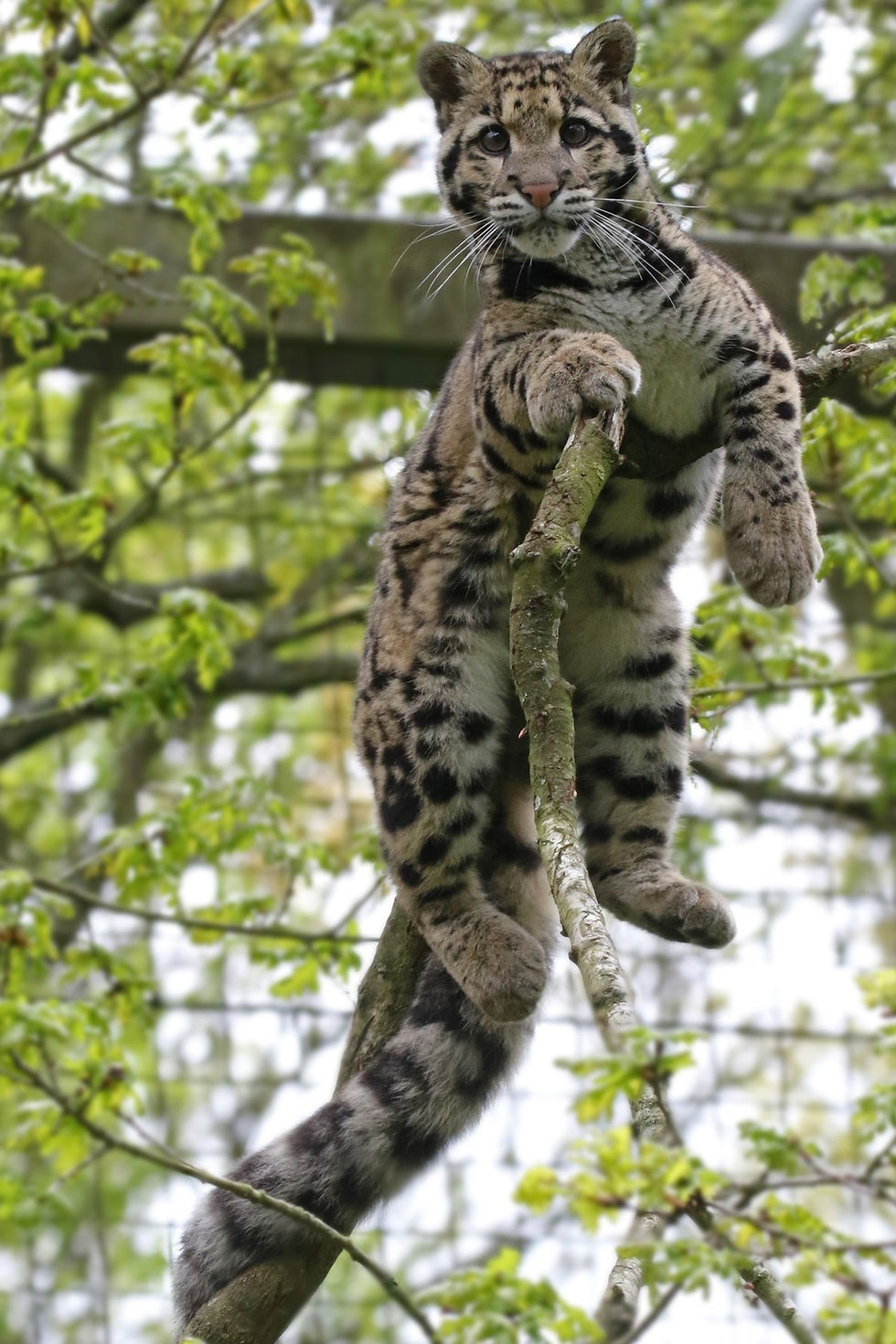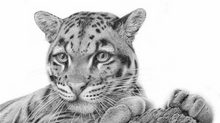The Clouded Leopard...
- Jon Isaacs
- Mar 18, 2021
- 3 min read
Updated: May 24, 2024
I love “Cloudies”! By Jon Isaacs
I was looking through David’s excellent book Pencils, Patience and Primates when I came across a wonderful Clouded leopard drawing.
It was drawn in 2000 and showed a rear view of the sitting creature with the head turned sideways and the extremely long tail flowing out behind. The text which accompanied the drawing stated that the Clouded Leopard was David’s favourite big cat species. Well, that makes two of us!
'Clouded Leopard' Limited edition print by David Dancey-Wood
In 2015 in August, I was surfing the web when I came across a gallery in East Anglia that was advertising a few original David Dancey-Wood drawings which they were very excited to be able to offer for sale. Amongst them was a stunning portrait of a Clouded Leopard. I immediately contacted the gallery and secured the picture which now resides in our hall and which I pass and admire daily.

The Clouded Leopard is a creature cloaked in mystery. It has links with saber-tooth tigers, having the longest canines of any current cat species. There is continual debate as to whether it should be classified as a “Big” cat or small. In truth, in size it fits in the middle of all wild cat species but has a skull and brain casing more closely attuned to the other “Big” cats. It is found in South East Asia and was considered to be one species. However, in 2006, having viewed skulls, teeth and molecular structure it was decided that there were two species. The general one was the Indochinese or simply Clouded leopard which resided in mainland Asia. The new species was the Sunda Clouded leopard which is found in Borneo and Sumatra. The two species can be identified by their coats. The Sunda Clouded leopards are overall darker with a greyer fur and smaller blotches whilst the Indochinese is paler with much larger blotches. Both species are very arboreal but will hunt on the floor of the jungle. Although protected, both species are still hunted for their pelts and numbers are probably decreasing. Their status is officially vulnerable. Little is known about the species in the wild but the facts that they prefer deep jungle and often hunt at night hinder study. Approximately twelve have ever been radio collared so there is still much to learn about this enigmatic cat.

Only about half a dozen zoos keep “Cloudies” in the UK. Trying to find compatible pairs is extremely difficult although compatibility seems to work better with youngsters that are put together. It is not unusual for the male to kill the female with a single bite to the back of the neck. Equally, in captivity, it is not unknown for a female who has kittens to completely reject them. Nobody knows how” Cloudies” breed and raise families in the wild so managing them in captivity is still partly trial and error.

One of the zoos which have successfully bred several litters of Indochinese “Cloudies” is the Cotswold wildlife park. They have a superb exhibit which mimics a jungle and can be split into a couple of sections. In August 2014 a tiny female kitten was found on the exhibit floor having been born and rejected by her mother. She was cold and weak and the curator decided to try and rear her himself. The kitten was named Nimbus. She wanted to live and having been warmed and fed she settled down in the curator’s bathroom. There she picked up strength and grew over a six-week period before being returned to the smaller enclosure in the exhibit. In time she was mixed with an elder sister before being released into the main enclosure with the mother and father.

Unlike her parents, who tended to spend most of the daylight hours sprawling on platforms, Nimbus loved to explore, come to the glass to look at visitors or to converse with owner’s dogs who would look at her with a mixture of excitement and wonder. She grew into a beautiful cat that I photographed repeatedly during visits during 2015. Then, in 2016, I heard a rumour that she had been killed one night by a single bite to the back of the neck. My informant told me that it was thought that she had inadvertently tried to go into the sleeping box of the male who then killed her. I’ve never been able to get this confirmed and have seen more than two “Cloudies” in the enclosure since, but none seemed to have her personality. If it is true, then I feel privileged to have seen and photographed her as she was a very special cat.














































Comments